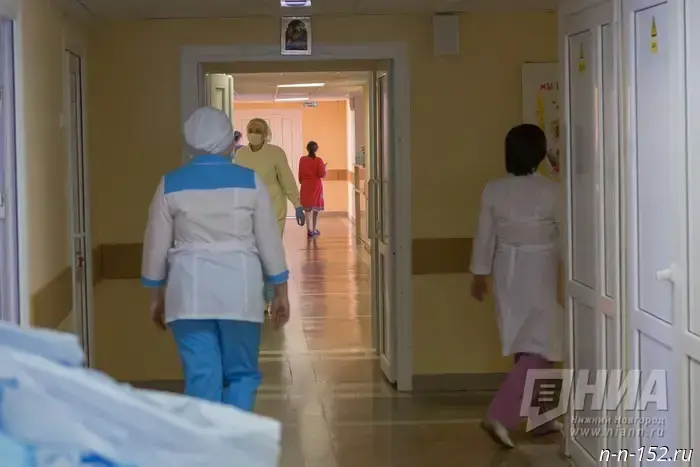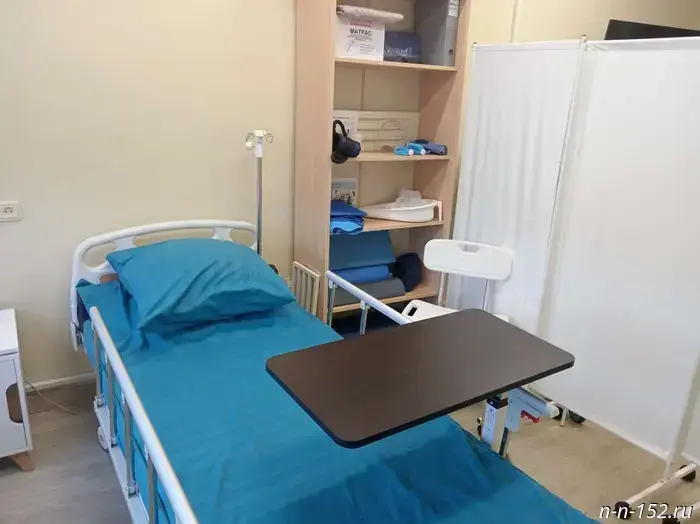
The doctor explained which residents of Nizhny Novgorod are at risk of thrombosis.
October 15, 2025 17:16 Society NIA "Nizhny Novgorod" — Polina Zubova
The formation of a clot is one of the most frequent and tragic causes of sudden death. Moreover, outwardly a person may be completely healthy, leading a healthy and active lifestyle. The insidiousness of this threat is that it can hide in the body for years and then manifest instantly and irreversibly.
In August, the head of the Department of Education of the Nizhny Novgorod administration, Vladimir Radchenko, unexpectedly died due to a detached clot, and in October doctors could not save one of Russia’s most famous head chefs, the brand chef of two Nizhny Novgorod restaurants, Oleg Kolisnichenko. A clot was found in his carotid artery.
A correspondent for NIA "Nizhny Novgorod" spoke with neurologist Valeriya Alekseevna Troshina of the PIMU University Clinic about what clots are, why they can form even in outwardly healthy people, and how to recognize the danger in time.
Where clots come from
According to Valeriya Troshina, clots are a genetically programmed mechanism.
“It is important to see the whole picture and not to label a clot as ‘bad, something to fight.’ Our body is extremely provident. It has a huge number of genetically programmed systems and subsystems that work together as a team. For example, there is a clotting system; its purpose is to create clots, to coagulate blood in the right place at the right time and save the body from blood loss—in simple terms: ‘to patch a hole in the wall as quickly as possible.’ Its helper is the anticoagulation system. It turns on when the first one is activated and commands: ‘pot, stop cooking,’ thanks to which the excess clot is destroyed: ‘it spackles the wall, makes it smooth like it was, and disposes of excess building materials around.’ Normally, both systems are in balance and a person does not even suspect the microprocesses of constant regeneration happening inside them,” the doctor said.
How to recognize a clot
The expert explained that to understand the nature of a clot, it is important to figure out why and under what conditions it forms. In her words, in a healthy body blood flows through the vessels linearly, in a certain rhythm set by the heart.
“Imagine a racetrack — that’s a vessel; blood cells are the cars; the little people inside the cars are nutrients and oxygen. Normally they race in their lanes at a certain speed and do not crash into each other. But what if we add obstacles on the track that the cars will have to swerve around and brake for?” the specialist added.
If atherosclerotic plaques appear on the walls of this “track,” or if the flow rhythm is disturbed — as in arrhythmia or atrial fibrillation — normal blood flow becomes turbulent. In that case, blood cells begin to collide with each other and with obstacles, which increases the risk of clot formation. Troshina notes that this can be compared to a traffic jam on a track: in the worst case there is a complete blockage of the vessel, and nutrients cannot reach the required organ. As a result, ischemia develops — oxygen starvation of the tissues that the vessel supplied. It is by these functional disturbances of an organ that the presence of a clot can be suspected.
There are usually no physical signs of the clot itself. Its presence can only be suspected from how it affects the function of organs and tissues. For example, if a clot blocks the vessel supplying the area of the brain responsible for moving an arm, the arm will begin to weaken. If the blood supply to an area related to the sensation of a leg is disrupted, numbness will appear. So the symptom depends on which part of the body was left without oxygen.
Risk groups
The neurologist identified three main groups of patients at risk: anxiety and depression; heart rhythm disorders; excess weight.
“Moreover, while the second and third groups regularly take medications for the prevention of clot formation — antiplatelet agents, statins, and so on — the first group remains underdiagnosed, takes nothing, and tries to cope on their own. It is scientifically proven that patients with long-term anxiety and depression often transition into the second and third groups. Depression is a destabilization of the hypothalamic-pituitary-adrenal axis, which leads to increased functional activity and platelet aggregation, and therefore increases the risk of clot formation,” she emphasized.
How to protect yourself from clots
The most reliable method of prevention is the timely identification of risk factors and their compensation. It is especially important to pay attention to hidden threats — anxiety and depression.
If you see a doctor in time, undergo an examination and, if necessary, begin treatment, you can significantly reduce the risk of clot formation and avoid severe consequences.
Earlier, Nizhny Novgorod residents were reminded about measures to prevent thrombosis during long flights.
NIA "Nizhny Novgorod" has a Telegram channel. Subscribe to stay informed about major events, exclusive materials and timely information.
Copyright © 1999—2025 NIA "Nizhny Novgorod". When reprinting, a hyperlink to NIA "Nizhny Novgorod" is required. This resource may contain materials intended for ages 18+.
Другие Новости Нижнего (Н-Н-152)
 The Nizhny Novgorod mayor's office wants to create two new ANOs.
The head of the Nizhny Novgorod branch of the People's Front was arrested for two months.
The head of the Nizhny Novgorod branch of the People’s Front was arrested for two months. 15.10.2025. Nizhegorodskaya Pravda. Nizhny Novgorod Region. Nizhny Novgorod.
The Nizhny Novgorod mayor's office wants to create two new ANOs.
The head of the Nizhny Novgorod branch of the People's Front was arrested for two months.
The head of the Nizhny Novgorod branch of the People’s Front was arrested for two months. 15.10.2025. Nizhegorodskaya Pravda. Nizhny Novgorod Region. Nizhny Novgorod.
 School of Care with the support of LUKOIL
Photo: LLC "LUKOIL-Nizhegorodnefteorgsintez"
In 2024, the Center for Social Services for Elderly Citizens and People with Disabilities. 15.10.2025. NIA Nizhny Novgorod. Nizhny Novgorod Region. Nizhny Novgorod.
School of Care with the support of LUKOIL
Photo: LLC "LUKOIL-Nizhegorodnefteorgsintez"
In 2024, the Center for Social Services for Elderly Citizens and People with Disabilities. 15.10.2025. NIA Nizhny Novgorod. Nizhny Novgorod Region. Nizhny Novgorod.
 The Privolzhsky District of the Russian National Guard marked the 45th anniversary of its formation.
Representatives of the United Russia party took part in the event
A ceremonial event took place in the Nizhny Novgorod Region on 15.10.2025. United Russia. Nizhny Novgorod Region. Nizhny Novgorod.
The Privolzhsky District of the Russian National Guard marked the 45th anniversary of its formation.
Representatives of the United Russia party took part in the event
A ceremonial event took place in the Nizhny Novgorod Region on 15.10.2025. United Russia. Nizhny Novgorod Region. Nizhny Novgorod.
 Minister Puchkov denied that a bloody brawl took place at Nizhny Novgorod School No. 117.
Minister Puchkov denied that a bloody brawl took place at Nizhny Novgorod School No. 117.
 A sixth-grader injured his nose during a crush at School No. 117 in Nizhny Novgorod.
Earlier, reports of a mass brawl circulated on social media.
At School No. 117 in the Sormovsky District of Nizhny Novgorod, a sixth-grader suffered a broken nose during a crush in one of the corridors. 15.10.2025. Newsroom24.Ru. Nizhny Novgorod Oblast. Nizhny Novgorod.
A sixth-grader injured his nose during a crush at School No. 117 in Nizhny Novgorod.
Earlier, reports of a mass brawl circulated on social media.
At School No. 117 in the Sormovsky District of Nizhny Novgorod, a sixth-grader suffered a broken nose during a crush in one of the corridors. 15.10.2025. Newsroom24.Ru. Nizhny Novgorod Oblast. Nizhny Novgorod.
